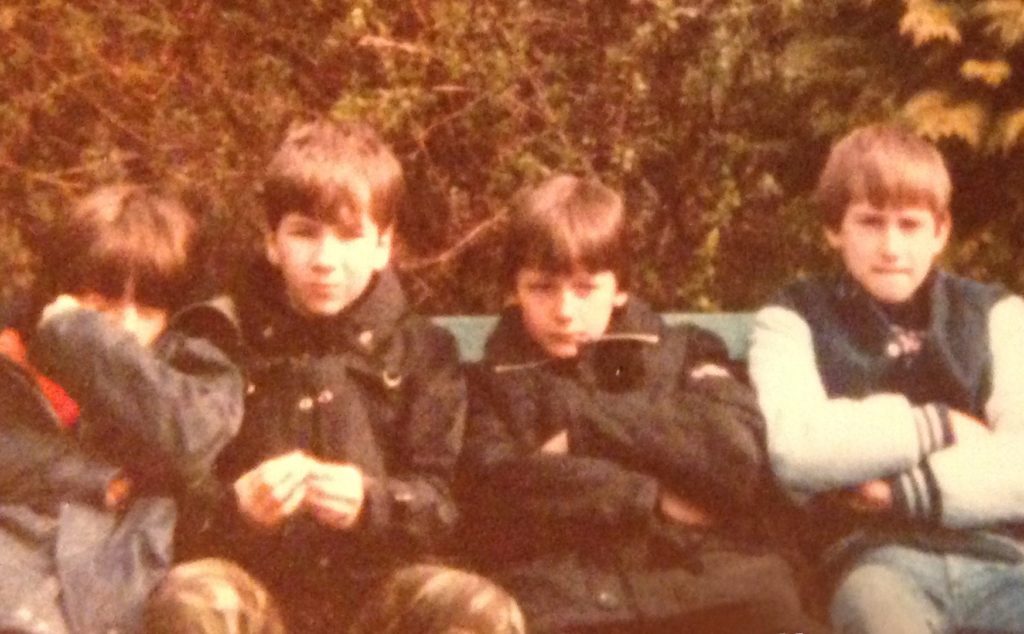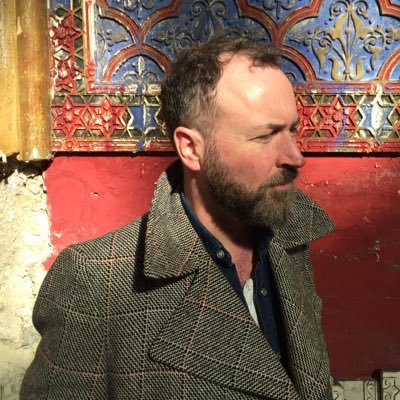A musician, a record shop owner and radio DJ, David Keenan has written, for BM’s money, one of the best music books to come out of Scotland for some years.
BM attended Keenan’s Aye Write event earlier in March and has devoured (in the way that Donald Dewar we are told used to with a round of sandwiches) this tome which describes the aftermath of the existence of an imagined Airdrie postpunk band in the 1980s, through interviews and other prose. Here BM tries to get a handle on the inner workings of Mr Keenan’s approach, to understand why he wrote it and why it is so good!
1. How is the book campaign going – BM saw about half of the Aye Write appearance, ably compered by Vic Galloway? Are there more of these events planned, either literary ones or as part of music festivals?
It’s going great and we have events booked for the rest of the year including doing the Edinburgh Festival in August and one-off nights coming up in Cumbernauld, Kirkcaldy, Linlithgow, St Andrews, Bristol and London as well as appearances at festivals this summer like Port Eliot Festival in Cornwall in July and the End Of The Road fest, Festival no.6 in Portmeirion and the Good Life Festival in Wales all in September. Also a very special night in Airdrie Library, a location that features extensively throughout my book, in October.
2. Describe the process (please!) by which your words came to be an actual object, via the publisher, the agent and all the other crap that BM is sure went with it!
I didn’t have an agent and had no idea how to get one. I spent ten years writing one book after the other (six in all) with no real idea about how to go submitting to a publisher. I had no contacts in the publishing world and was very unsure how it worked though everyone said that you need to get an agent first and also that big publishers didn’t accept unsolicited manuscripts. So I told myself just to keep on writing, one book after the other, that the work was the most important thing, the writing.
Then out of the blue I got a contact for an editor I had heard of – Lee Brackstone at Faber & Faber – who I knew through him working on books with Julian Cope and Kim Gordon. Being completely naïve I wrote him direct and simply asked him if he would like to read a few chapters from a novel I had just completed. I had literally just finished my last edit on This Is Memorial Device. Unbelievably he said yes, send me over some sample chapters. He then got back immediately and said he liked them could I send the whole book. This was on a Friday. On the Monday he called me and made me an offer for worldwide rights. I’ve since come to learn that this is an extremely unlikely perhaps even unheard of way to get your book signed. Only then did I get an agent.

3. So if Memorial Device was a band, what would they sound like? As described in the book or something different, i.e. were you thinking of an actual band when you wrote?
I imagine Memorial Device as sounding like Pärson Sound fronted by Ian Curtis of Joy Division.
4. Airdrie was maybe not on BM’s radar as a thriving postpunk scene – Bellshill however boasted some influential combos as well as the legendary Sheena Easton. Are you jealous of this?
I’m jealous of Sheena Easton for sure. Bellshill would make a whole other book. The Bellshill sound was really more indie-focussed whereas my imaginary scene in Airdrie was more industrial-experimental-drone focussed. More dystopian. Airdrie seemed even more cut-off and complicated and romantic and grim. Though everyone still liked The Beach Boys and Big Star.
5. What “Books About Music” do you admire and did they influence you in the writing of TIMD?
My all-time favourite book about music is Lester Bangs’ Psychotic Reactions and Carburetor Dung: rock n roll as literature, literature as rock n roll. I’m inspired by the energy of his language, the way his criticism never betrayed the music he was writing about, was always its equal. I like Psychotic Reactions… as much as any of my favourite LPs.
Also big for me were two books by Legs McNeil – Please Kill Me and The Other Hollywood. They are both ‘oral histories’ and I really wanted to adapt and fuck with that kind of form for my novel. I particularly love The Other Hollywood, the book he wrote with Jennifer Osborne, an oral history of the glory years of the porn world.
Other music writers I like: Greil Marcus, Peter Guralnick, Kevin Whitehead, Paul Williams, Ben Ratliff, Biba Kopf, John ‘Inzane’ Olson, David Toop. Recently I have enjoyed Barney Hoskyns’ Small Town Talk, Cosey Fanni Tutti’s Art Sex Music and David Toop’s Into The Maelstrom: Improvisation and The Dream of Freedom.

6. This book has played well to Scottish audiences, possibly beyond the narrow confines of ageing postpunkers. Have you got any sense that there is a wider audience, for example the French might go for this kinda thing? Are translations being discussed and how would this work?
Yes, the book seems to have struck a chord (one of only three, obviously) with many different people and although it is set in Airdrie and deals with the post-punk era I would like to think that the book transcends both its setting and its time and really is a form of every-town and every-time: deep down it’s about the power a charged encounter with art can have for you and how it can transform your surroundings and the way you see them. It’s also about all the possibilities of being young and what happens to that energy. But yes – so far we have French and Spanish language editions all due for later this year.
7. And the Americans? Any bite?
Yes, there will be an American edition, hopefully out before the end of the year.
8. Your only other published book is England’s Hidden Reverse. It is hard to get hold of, BM cannae afford it at the moment but it appears to be back in print. How did you research it and who were your best sources?
I did it all in one-on-one interviews, all from original sources. I travelled to Ireland to stay with Steve Stapleton of Nurse With Wound where he lives on a goat farm that he has turned into a visionary environment. I lived with John Balance and Peter ‘Sleazy’ Christopherson of Coil in Weston-super-Mare at the old boy’s school they called home. Many people opened their archives to me. It was an incredibly exciting time in music and culture and I thought it was important to get the story from primary sources before they all disappeared.
9. You said at the reading that there were several other books already written and not destroyed. Will we be seeing them in print soon?
Yes, hopefully, one after the other, although I am constantly working on new books as well. Next up, all being well, is a novel set during the troubles in Belfast called For The Good Times.
10. What kind of music do you enjoy now – and what was the last gig, and next gig, you are intending to attend?
My two favourite groups of all time are Throbbing Gristle and The Velvet Underground. I feel that most of the stuff I like is somewhere between those two poles. My favourite music, however, is Free Jazz, and I still listen to a lot of that. The last gig I attended was Alasdair Roberts at The Glad Café in Glasgow. The next gig I am going to is a secret installation in a cave on a cliff-face in County Clare in Ireland. The gig I am dreaming of is seeing Lana Del Ray live.
More David Keenan at http://www.reversediorama.com
More at the Faber website
Hear a Quietus chat about the book

